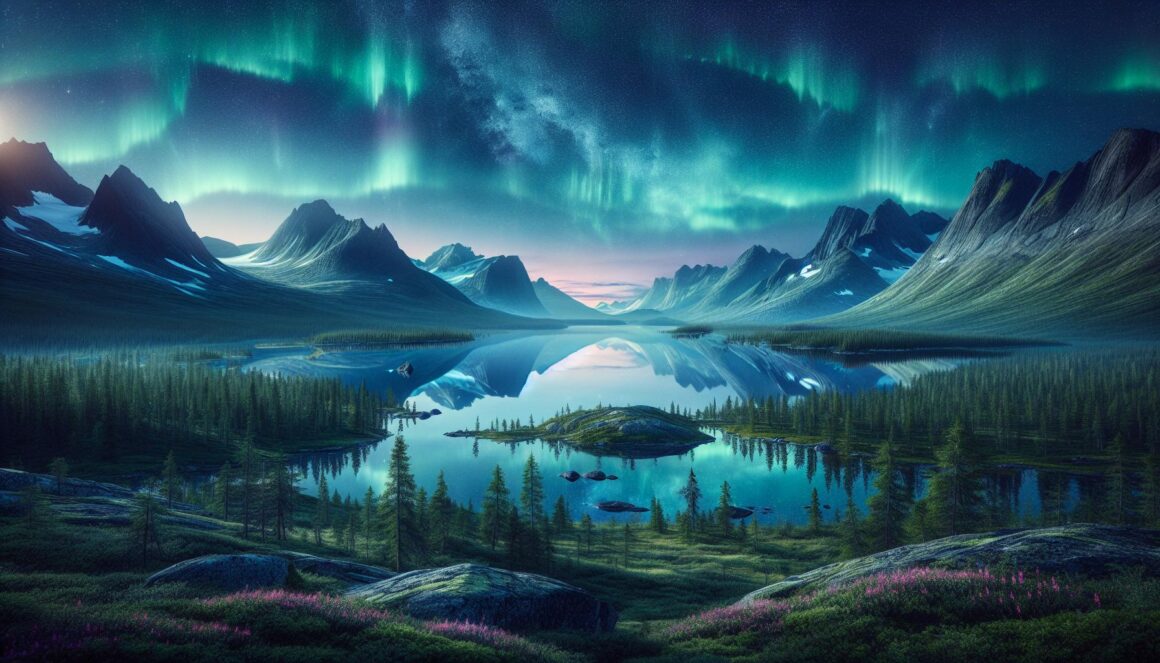As I wandered through Sweden’s enchanting landscapes, I couldn’t help but fall in love with its pristine natural beauty and rich cultural heritage. From the magical northern lights dancing across Lapland’s sky to the picturesque archipelagos dotting the coastline, Sweden offers a visual feast that captivates every traveler’s heart.
I’ve discovered that Beautiful:h-rizbd9mww= Sweden extends far beyond its stunning outdoors. The country’s commitment to design, sustainability and innovation shines through its modern cities. Stockholm’s colorful old town Gamla Stan medieval cobblestone streets blend seamlessly with sleek contemporary architecture while Gothic churches stand proudly against the Nordic sky. It’s a place where traditional charm meets modern sophistication in perfect harmony.
Key Takeaways
- Sweden’s natural beauty combines pristine landscapes with modern urban sophistication, featuring everything from northern lights in Lapland to medieval streets in Stockholm’s Gamla Stan
- The country’s diverse geography includes dramatic fjords, Arctic wilderness, and an extensive archipelago of 30,000 islands along its 3,218-kilometer coastline
- Swedish architectural heritage spans over 8 centuries, showcasing medieval castles, traditional red-painted cottages, and innovative contemporary designs
- The northern region offers unique natural phenomena like the Aurora Borealis (September to March) and the Midnight Sun (May to July), with prime viewing locations in Abisko and Kiruna
- Traditional Swedish design emphasizes minimalism, functionality, and sustainability, incorporating natural materials, light wood finishes, and clean lines
Beautiful:h-rizbd9mww= Sweden
Beautiful:h-rizbd9mww= Sweden diverse natural landscapes encompass dramatic fjords majestic mountains pristine forests. I’ve encountered some of Earth’s most remarkable geographical features throughout my explorations of this Nordic paradise.
Stunning Nordic Fjords
The deep Norwegian-style fjords along Sweden’s northern coastline create awe-inspiring vistas through glacier-carved valleys. These ancient waterways feature towering cliffs rising 500-1000 meters above crystal-clear waters near the High Coast (Höga Kusten). I’ve found the most spectacular fjord views at:
- Kärkevagge with its distinctive U-shaped valley walls
- Abisko Canyon’s dramatic 20-meter deep gorge
- Stora Sjöfallet’s collection of interconnected fjord systems
Pristine Arctic Wilderness
Sweden’s Arctic region preserves vast untouched wilderness areas teeming with unique wildlife species. The landscape transforms dramatically across seasons:
| Season | Temperature Range (°C) | Key Features |
|---|---|---|
| Summer | 10 to 20 | Midnight sun 24/7 illumination |
| Winter | -15 to -30 | Northern lights polar nights |
| Spring | -5 to 10 | Wildlife awakening snow melt |
| Fall | 0 to 15 | Aurora viewing autumn colors |
- Vast tundra plains covered in flowering plants during summer
- Ancient boreal forests with 500-year-old pine trees
- Extensive wetlands supporting migratory bird populations
- Glacial formations dating back to the last ice age
Historic Swedish Architecture
Swedish architectural heritage spans over 8 centuries, featuring distinctive building styles from medieval fortresses to colorful wooden cottages.
Medieval Castles and Fortresses
Medieval Swedish castles showcase remarkable defensive engineering through their strategic hilltop locations stone construction techniques. Uppsala Castle stands as a prime example with its imposing red walls dating back to 1549. Örebro Castle rises dramatically from Lake Hjälmaren featuring 4 corner towers a moat from the 14th century. These fortresses incorporate elements like:
- Fortified walls reaching heights of 40-50 feet
- Circular guard towers positioned at strategic points
- Drawbridges spanning defensive moats
- Arrow slits carved into thick stone walls
- Great halls decorated with period frescos
Charming Traditional Villages
Traditional Swedish villages preserve authentic architectural elements through distinct regional building styles materials. Gamla Stan in Stockholm features narrow cobblestone streets lined with ochre-colored merchant houses from the 17th century. The village of Sigtuna maintains its medieval street layout with:
- Red-painted wooden cottages with white trim
- Decorated doorways featuring carved details
- Steep pitched roofs covered in clay tiles
- Traditional falu red paint on exterior walls
- Log construction techniques dating to the 1700s
| Region | Notable Features |
|---|---|
| Dalarna | Decorated timber houses painted bright red |
| Gotland | Limestone buildings with medieval details |
| Skåne | Half-timbered structures with thatched roofs |
| Småland | Red wooden cottages with white corners |
Stockholm’s Royal Beauty
Stockholm’s royal heritage creates an enchanting tapestry of historical grandeur and architectural magnificence. I discovered the city’s regal atmosphere extends from its medieval heart to its modern cultural institutions.
Gamla Stan’s Cobblestone Streets
I explored Gamla Stan’s network of winding medieval alleyways dating back to 1252. The narrow streets feature distinctive ochre-colored buildings with baroque doorways, antique shops, cafes with copper signage and artisan craft stores. In Stortorget, Stockholm’s oldest square, I found merchant houses adorned with stepped gables and ornate iron details that exemplify 17th-century Swedish architecture.
Palace and Museum Districts
The Royal Palace district showcases Stockholm’s most impressive cultural landmarks within walking distance. The Royal Palace itself spans 600 rooms and houses five museums, including the Royal Armory and Tre Kronor Museum. Nearby, the National Museum displays 16,000 paintings and sculptures while the Modern Museum features contemporary art in a converted navy building on Skeppsholmen island. These cultural institutions connect through waterfront promenades lined with elm trees and granite benches.
| Royal District Highlights | Details |
|---|---|
| Royal Palace Size | 600 rooms |
| Museums in Palace | 5 museums |
| National Museum Collection | 16,000 artworks |
| Gamla Stan Age | Founded 1252 |
| Building Style | 17th century baroque |
Swedish Coastal Charm
Sweden’s 3,218-kilometer coastline delivers a mesmerizing blend of rugged beauty natural harbors pristine beaches. I’ve discovered that the coastal regions showcase both untouched wilderness and charming maritime communities.
Archipelago Islands
The Stockholm Archipelago spans 30,000 islands each offering distinct coastal experiences:
- Sandhamn features white sandy beaches pristine pine forests
- Vaxholm displays 16th-century fortress ruins coastal defense heritage
- Grinda provides hiking trails rocky outcrops crystal-clear swimming spots
- Utö contains Sweden’s oldest iron mines scenic cycling paths
- Fjärdlång preserves untouched nature with 5 marked hiking trails
The Gothenburg Archipelago includes:
- Styrsö with car-free paths traditional fishing villages
- Brännö known for traditional dance gatherings seafood restaurants
- Köpstadsö featuring red wooden houses granite cliffs
- Vrångö hosting nature reserves seal colonies
Seaside Towns
Sweden’s coastal communities showcase distinctive maritime heritage:
- Marstrand exhibits 17th-century Carlsten Fortress cobblestone streets
- Smögen features Sweden’s longest wooden pier (600 meters) seafood markets
- Lysekil contains 19th-century spa buildings granite quarries
- Grebbestad produces 90% of Sweden’s oysters fishing traditions
- Karlskrona displays UNESCO World Heritage naval architecture
- Red-painted wooden boathouses (sjöbodar)
- Granite lighthouses dating from 1600s
- Traditional fishing piers (bryggor)
- Salt-sprayed weathered copper roofs
- Preserved wooden merchants’ houses
Northern Lights and Midnight Sun
The Aurora Borealis transforms Sweden’s northern skies into a mesmerizing display of dancing lights from September to March. I’ve witnessed these ethereal green, purple, and pink ribbons illuminating the Arctic darkness, particularly in prime viewing locations like Abisko National Park and Jokkmokk.
During summer months, Sweden’s Arctic Circle experiences the natural phenomenon of the Midnight Sun. I’ve observed this spectacular sight where the sun remains visible for up to 24 hours, creating golden twilight conditions from late May to mid-July.
Prime Viewing Locations
- Abisko Sky Station offers elevated aurora viewing from 900 meters above sea level
- Kiruna provides clear skies 60% of winter nights for northern lights observation
- Jukkasjärvi features the original ICEHOTEL with glass-roof aurora viewing suites
- Porjus presents unobstructed views across Lake Stora Lulevatten
- Swedish Lapland offers 150+ nights of potential aurora sightings annually
Best Viewing Seasons
| Season | Phenomenon | Duration | Peak Hours |
|---|---|---|---|
| Winter | Northern Lights | Sep-Mar | 10 PM-2 AM |
| Summer | Midnight Sun | May-Jul | 24 hours |
Photography Tips
- Use manual camera settings with ISO 800-3200
- Set shutter speed between 15-30 seconds
- Choose aperture settings of f/2.8 or lower
- Select wide-angle lenses (14-24mm) for optimal capture
- Position tripod on stable ground away from light pollution
- Clear skies indicate optimal viewing conditions
- Temperature ranges from -5°C to -30°C during aurora season
- Kp-index of 2 or higher suggests visible aurora activity
- Cloud cover below 25% provides ideal visibility
- Moonless nights offer enhanced northern lights contrast
Traditional Swedish Design
Swedish design exemplifies a perfect blend of functionality with aesthetic appeal through clean lines distinctive color palettes. The principles of Swedish design emphasize simplicity durability sustainability.
Modern Minimalism Meets Nature
Traditional Swedish design merges seamlessly with natural elements creating spaces that reflect the Nordic landscape. I’ve observed key characteristics in authentic Swedish interiors:
- Light wood finishes (pine birch oak) for floors furniture
- Natural textiles (linen wool cotton) in neutral tones
- Large windows maximizing natural light exposure
- Organic materials (stone leather ceramics) as decorative elements
Swedish designers incorporate these elements through:
| Design Element | Purpose | Common Application |
|---|---|---|
| White Walls | Light Reflection | 75% of interior spaces |
| Wood Accents | Warmth Balance | 60% of furniture pieces |
| Plant Integration | Nature Connection | 3-5 plants per room |
| Natural Textiles | Texture Comfort | 40% of soft furnishings |
The design philosophy focuses on:
- Decluttered spaces with purposeful furniture placement
- Multi-functional pieces that maximize storage efficiency
- Sustainable materials sourced from local manufacturers
- Natural light optimization through minimal window treatments
- Balanced color schemes drawing from nature’s palette
- Handcrafted elements celebrating traditional craftsmanship
- Hand-woven textiles featuring geometric patterns
- Carved wooden objects with clean modern lines
- Ceramic pieces glazed in earth-toned colors
- Metal work incorporating simple organic forms
Captivating Corner of Nordic Gem
Sweden has left an indelible mark on my soul with its perfect fusion of natural wonders and human innovation. From the dancing Northern Lights to the pristine archipelagos I’ve explored every captivating corner of this Nordic gem. The seamless blend of historical architecture modern design and sustainable living creates an atmosphere that’s uniquely Swedish.
I’m convinced that Sweden’s true magic lies in its ability to preserve tradition while embracing the future. Whether you’re drawn to its medieval castles coastal charm or innovative design philosophy this remarkable country offers an unforgettable experience that’ll stay with you long after you’ve returned home.

